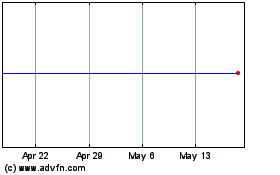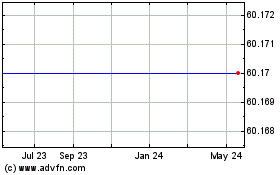Cooper Tire Stockholders Overwhelmingly Approve Proposed Merger with Goodyear
01 May 2021 - 12:50AM
Business Wire
Cooper Tire & Rubber Company (NYSE: CTB) today announced
that its stockholders overwhelmingly voted to approve the agreement
and plan of merger with The Goodyear Tire & Rubber Company
(Nasdaq: GT), which was announced Feb. 22, 2021. At a special
meeting of Cooper stockholders held today, approximately 99 percent
of votes cast were in favor of the transaction. Goodyear is not
required to hold a vote of its stockholders to approve the merger
agreement.
“We are pleased with the strong support of our stockholders for
the proposed business combination of Cooper and Goodyear as all
proposals related to the acquisition were approved,” said John
Holland, Cooper Chairman. “This step is an important one in the
process of bringing together our two companies to continue to meet
the needs of customers, consumers and other stakeholders around the
world while driving value for shareholders.”
Cooper and Goodyear continue to work toward closing the
transaction, which remains subject to the receipt of required
regulatory approvals and the satisfaction of customary closing
conditions.
Cooper will provide final special meeting vote results, as
certified by the independent Inspector of Election, on a Form 8-K
that will be filed with the U.S. Securities and Exchange
Commission.
About Cooper Tire & Rubber Company
Cooper Tire & Rubber Company (NYSE: CTB) is the parent
company of a global family of companies that specializes in the
design, manufacture, marketing and sale of passenger car, light
truck, medium truck, motorcycle and racing tires. Cooper's
headquarters is in Findlay, Ohio, with manufacturing, sales,
distribution, technical and design operations within its family of
companies located in more than one dozen countries around the
world. For more information on Cooper, visit www.coopertire.com,
www.facebook.com/coopertire or www.twitter.com/coopertire.
Forward-Looking Statements and Cautionary Statements
This communication includes “forward-looking statements” within
the meaning of the Private Securities Litigation Reform Act of
1995. You can identify forward-looking statements by words such as
“anticipate,” “believe,” “could,” “design,” “estimate,” “expect,”
“forecast,” “goal,” “guidance,” “imply,” “intend,” “may,”
“objective,” “opportunity,” “outlook,” “plan,” “position,”
“potential,” “predict,” “project,” “prospective,” “pursue,” “seek,”
“should,” “strategy,” “target,” “will,” “would” or other similar
expressions that convey the uncertainty of future events or
outcomes. In accordance with “safe harbor” provisions of the
Private Securities Litigation Reform Act of 1995, these statements
are accompanied by cautionary language identifying important
factors, though not necessarily all such factors, that could cause
future outcomes to differ materially from those set forth in the
forward-looking statements. Forward-looking statements include, but
are not limited to, statements that relate to, or statements that
are subject to risks, contingencies or uncertainties that relate
to:
- the ability to complete the proposed merger of the company and
Goodyear on anticipated terms and timetable;
- the effect of restructuring or reorganization of business
components;
- uncertainty and weaknesses in global economic conditions,
including the impact of the ongoing coronavirus (COVID-19)
pandemic, or similar public health crises, on the company’s and
Goodyear’s financial condition, operations, distribution channels,
customers and suppliers, as well as potentially exacerbating other
factors discussed herein;
- continued volatility in raw material and energy prices,
including those of rubber, steel, petroleum-based products and
natural gas or the unavailability of such raw materials or energy
sources, which may impact the price-adjustment calculations under
sales contracts;
- the ability to cost-effectively achieve planned production
rates or levels;
- the ability to successfully identify and consummate any
strategic investments or development projects;
- the outcome of any contractual disputes with customers, joint
venture partners or any other litigation or arbitration;
- impacts of existing and increasing governmental regulation and
related costs and liabilities, including failure to receive or
maintain required operating and environmental permits, approvals,
modifications or other authorization of, or from, any governmental
or regulatory entity and costs related to implementing improvements
to ensure compliance with regulatory changes;
- the ability to maintain adequate liquidity, level of
indebtedness and the availability of capital could limit cash flow
available to fund working capital, planned capital expenditures,
acquisitions and other general corporate purposes or ongoing needs
of the business;
- the ability to continue to pay cash dividends, and the amount
and timing of any cash dividends;
- availability of capital and ability to maintain adequate
liquidity;
- the impact of labor problems, including labor disruptions at
the company, its joint ventures, or at one or more of its large
customers or suppliers;
- the ability of our customers, joint venture partners and
third-party service providers to meet their obligations on a timely
basis or at all;
- adverse changes in interest rates and tax laws; and
- the potential existence of significant deficiencies or material
weakness in the company’s internal control over financial
reporting.
Cooper has based its forward-looking statements on current
expectations, estimates and projections about the industry and the
company’s partnerships. The company cautions that these statements
are not guarantees of future performance and stakeholders should
not rely unduly on them, as they involve risks, uncertainties, and
assumptions that Cooper cannot predict. In addition, the company
has based many of these forward-looking statements on assumptions
about future events that may prove to be inaccurate. While
management considers these assumptions to be reasonable, they are
inherently subject to significant business, economic, competitive,
regulatory and other risks, contingencies and uncertainties, most
of which are difficult to predict and many of which are beyond
Cooper’s control.
Accordingly, actual results may differ materially from the
future performance that has been expressed or forecasted in the
forward-looking statements. Differences between actual results and
any future performance suggested in the forward-looking statements
could result from a variety of factors, including the
following:
- the failure to satisfy various conditions to the closing of the
transaction contemplated by the merger agreement;
- the failure to obtain governmental approvals of the transaction
on the proposed terms and schedule, and any conditions imposed on
the combined company in connection with consummation of the
transaction;
- the risk that the cost savings and any other synergies from the
transaction may not be fully realized or may take longer to realize
than expected;
- disruption from the proposed transaction making it more
difficult to maintain relationships with customers, partners,
employees or suppliers;
- the risk that the proposed transaction may be less accretive
than expected, or may be dilutive, and that the combined company
may fail to realize the benefits expected from the merger;
- risks relating to any unforeseen liabilities of Goodyear or the
company;
- the volatility in raw material and energy prices, including
those of rubber, steel, petroleum-based products and natural gas or
the unavailability of such raw materials or energy sources;
- extensive governmental regulation;
- changes to tariffs or trade agreements, or the imposition of
new or increased tariffs or trade restrictions, imposed on tires,
raw materials or manufacturing equipment which the company uses,
including changes related to tariffs on tires, raw materials and
tire manufacturing equipment imported into the U.S. from China or
other countries, as well as changes to trade agreements resulting
from the United Kingdom's withdrawal from the European Union future
laws and regulations or the manner in which they are interpreted
and enforced;
- the inability to obtain and/or renew permits necessary for the
operations;
- existing and future indebtedness may limit cash flow
available;
- operating expenses could increase significantly if the price of
electrical power, fuel or other energy sources increases;
- changes in credit ratings issued by nationally recognized
statistical rating organizations;
- risks involving the acts or omissions of our joint venture
partners;
- natural disasters, weather conditions, disruption of energy,
unanticipated geological conditions, equipment failures, and other
unexpected events;
- a disruption in, or failure of our information technology
systems, including those related to cybersecurity;
- failure of outside contractors and/or suppliers to
perform;
- the cost and time to implement a strategic capital project may
be greater than originally anticipated;
- reliance on estimates of recoverable reserves; and
- the risks that are described from time to time in Goodyear’s
and the company’s respective reports filed with the SEC.
The company undertakes no obligation to update any
forward-looking statements except to the extent required by
applicable law.
View source
version on businesswire.com: https://www.businesswire.com/news/home/20210430005421/en/
Investor Contact: Jerry Bialek 419.424.4165
investorrelations@coopertire.com
Media Contact: Anne Roman 419.429.7189
alroman@coopertire.com
Cooper Tire and Rubber (NYSE:CTB)
Historical Stock Chart
From Jan 2025 to Feb 2025

Cooper Tire and Rubber (NYSE:CTB)
Historical Stock Chart
From Feb 2024 to Feb 2025
